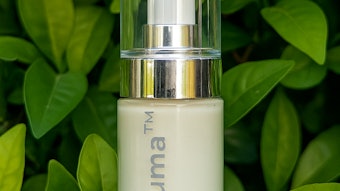“It has long been an axiom of mine that the little things are infinitely the most important.” —Sir Arthur Conan Doyle
Nanotechnology is the study of very small things, dealing with materials 100 nanometers or smaller in at least one dimension. One nanometer (nm) is one billionth of a meter. By comparison, the smallest bacteria are about 200 nm long; a human hair is approximately 80,000 nm wide, far beyond the nano range. However, if nanomaterials were just small versions of big things, they wouldn’t be particularly interesting. The exciting applications come because materials sometimes act in a fundamentally different way when their size shrinks to a minimum.
The scientific concept of nanotechnology was born in 1959 in a famous presentation by Richard Feynman, “There’s Plenty of Room at the Bottom.”1 Feynman talks about putting the Encyclopedia Britannica on the head of a pin, or making computers smaller than a building—1959 was a different world! But for all its antique quaintness, in his lecture, Feynman perceptibly realized, “At the atomic level, we have new kinds of forces and new kinds of possibilities, new kinds of effects.” He could not have been more prescient.
Practical Use
The prefix “nano” comes from the Latin nanus (dwarf), but the term “nanotechnology” was first used by K. Eric Drexler2 in his seminal 1986 book Engines of Creation: The Coming Era of Nanotechnology, available free online at e-drexler.com/p/06/00/EOC_Cover.html. Since its publication, there has been unceasing development of medical and cosmetic applications, and wide-ranging academic research. Cosmetic applications have concentrated on sunscreens, hair treatment and antiaging products.
Nanosized zinc oxide (ZnO) and titanium dioxide (TiO2) for sunscreens were the first, and still most important, applications of nanotechnology in personal care. The classic visual of macro TiO2 is a lifeguard with a white nose. By reducing the particle size below one fourth the wavelength of light, zinc oxide and titanium dioxide become invisible while completely maintaining their sun protectant properties. If anything, the smaller particle size enhances protection by fitting into small irregularities in the skin.
Nano TiO2 and ZnO are permitted by the U.S. Food and Drug Administration (FDA), and, remarkably, the Environmental Working Group (EWG) agrees with the FDA’s assesement,2 in part because of nano materials performance compared to alternatives and findings that the physical blocks of the nano materials measurably improved protection. EWG also studied the literature and found no evidence that nano sunblock particles could penetrate the skin. It was clear to EWG that any form of sunscreen was improved measurably by these materials.
Improving Delivery
Nanoemulsions are used to enhance the delivery of actives and have even been claimed to have antimicrobial properties.3 However, unlike the alternative (microemulsions), nanoemulsions do not form spontaneously and are not as thermodynamically stable.
In non-technical terms, a properly formulated microemulsion is easy to make and is extremely stable, while a nanoemulsion needs a lot of energetic mixing and is comparatively less stable. There is a scattering of research that may extend the properties and manufacturing procedures for nanoemulsions, such as the use of solvents that evaporate from the base during production.
In the beauty industry, P&G, L’Oréal and Henkel lead the pack in nano-related patents. Products are on the market from every major brand owner, most often to aid in the delivery of actives, but while the majors seem relatively subdued in publicizing the nano aspects of their products, some smaller players—such as Nano Derm (China) and Derma Nano (Singapore)—put the technology front and center.
In either case and strategic decision, the reason for nano delivery is clear—it can carry actives into the skin for increased efficacy. The Perricone brand, as a specific example, has created products with fullerene, a nano material, as a carrier for the brand’s actives. Fullerene, also used in Dr. Brandt Skincare’s Lineless Cream, is a molecule composed entirely of carbon, and can be in the form of a hollow sphere, ellipsoid or tube. Spherical fullerenes are commonly known as buckyballs, and cylindrical ones are known as carbon nanotubes.
Fullerenes, however, are a class of nanoparticles that have created safety concerns with some researchers. Carbon nanotubes have shown asbestos-like pathogenicity in mice. On the other hand, nanotubes have successfully been used to aid drug delivery. The safe and effective use of nano delivery systems obviously requires close study.
Addressing Safety
It is well-known that surface chemistry of materials such as these can affect toxicity, and, fortunately, the surface chemistry can be engineered to enhance safety. So far, there is no evidence of nanoparticles in beauty products being a health problem, but on the flip side, there is little conclusive proof that they are safe. There is a movement to consider nanomaterials as new chemicals and to have them tested as such.
Since there is no premarket approval of cosmetics by FDA, its regulatory approach to nanotechnology is cautious. The FDA Task Force, in 2007, basically stated that nanotechnology applications in personal care seemed safe from a toxicology and biological perspective4—but it would be nice to know more. For example, there is a need to develop standard particle characterization methods. The task force found no need to specifically label nanoparticles on products. Of course, brand owners are still responsible for marketing safe products, regardless of specific regulations.
In Conclusion
Nanotechnology is a broad field with many potential applications in beauty. With so much emphasis on efficacy for skin and hair products, there is no doubt that nanoparticles and nanoemulsions will continue to be exploited by formulators for the elevation of brand performance. A public attracted to technology and the effective delivery of actives will be attracted by “nano” on the label, and Feynman’s prediction will continue to prove true—there is plenty of room at the bottom.
Acknowledgment:
The NYSCC Spring Seminar on Nanotechnology (April 21, 2010) was very helpful, with special thanks to Amy K. Madl and Jay M. Ansell for kindly providing copies of their presentations.
References
- www.zyvex.com/nanotech/feynman.html
- www.ewg.org/cosmetics/report/sunscreen09/investigation/Nanotechnology-Sunscreens
- K Schaefer, Inherent Nano-sized Microbial Warfare, Cosm & Toil 64 (Apr 2010)
- www.fda.gov/downloads/ScienceResearch/SpecialTopics/Nanotechnology/ucm110856.pdf
(All Web sites accessed Jun 24, 2010)
Steve Herman is president of Diffusion LLC, a consulting company specializing in regulatory issues, intellectual property, and technology development and transfer. He is a principal in PJS Partners, offering formulation, marketing and technology solutions for the personal care and fragrance industry. He is an adjunct professor in the Fairleigh Dickinson University Masters in Cosmetic Science program and is a Fellow in the Society of Cosmetic Chemists.










